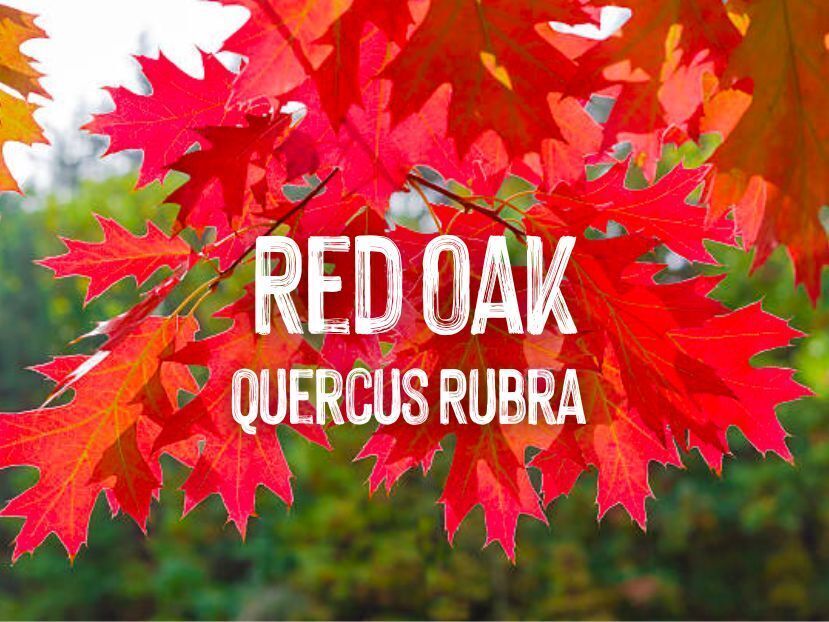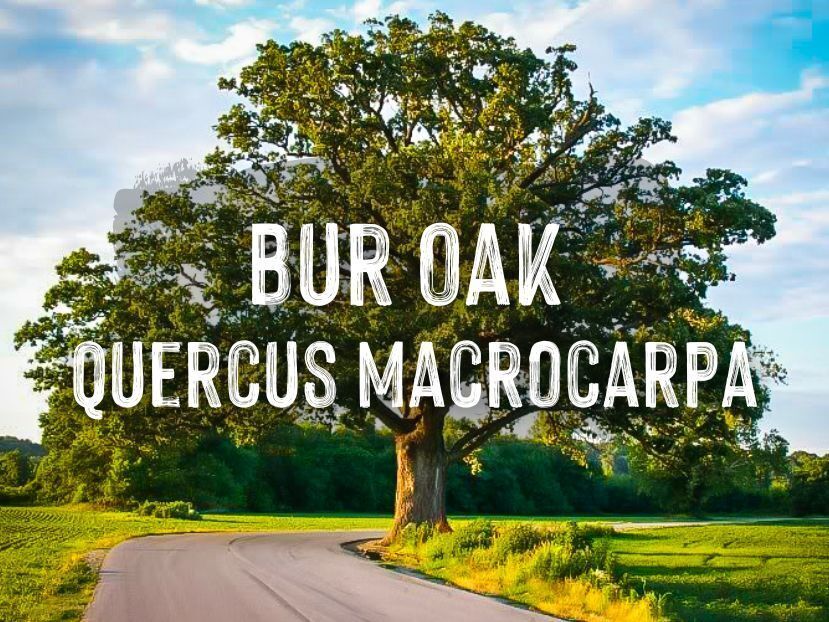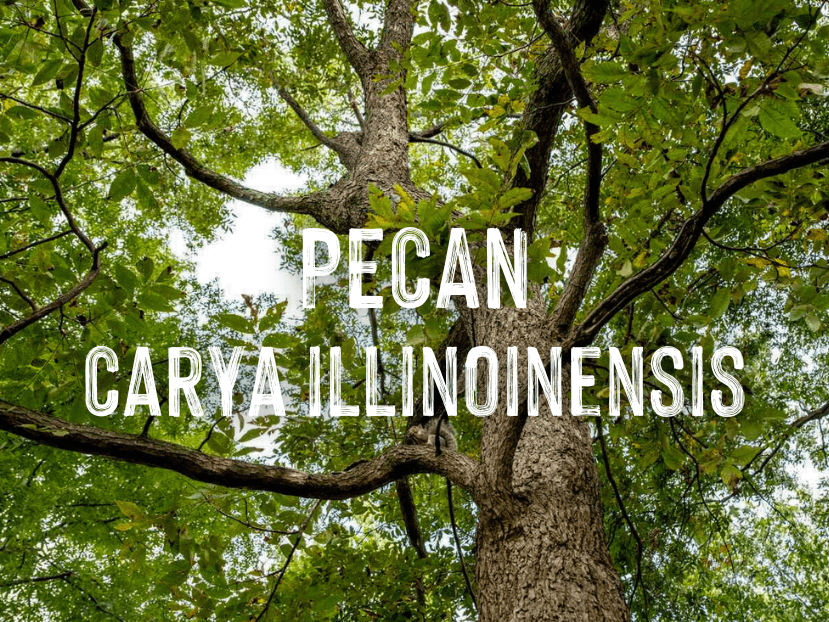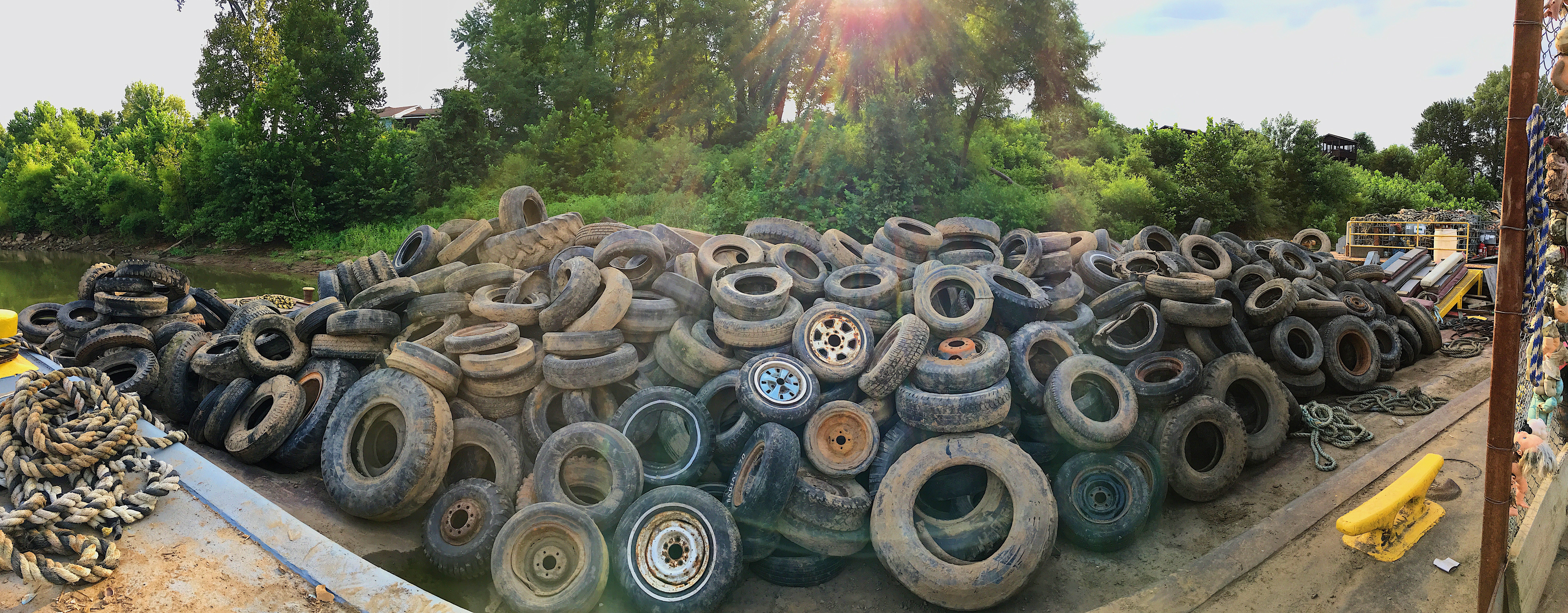MillionTrees Project
The MillionTrees Project was initiated in 2007 to help further our mission to protect, preserve, and restore the natural environment of our nation’s major rivers and their watersheds. Our mission is not only to clean up the riverways but also to enhance the watershed by planting native trees and removing invasive plants.
We started by collecting and planting acorns with the goal of growing one million trees. We reached that goal in 2016, and now, this spring, we’re working to surpass the two million mark!
Each spring, we distribute over 150,000 free tree seedlings, mainly oaks, to groups and individuals willing to get them in the ground.
In May 2014, we broke ground on a tree nursery located at 6000 Eastern Avenue in Davenport, IA. Our trees grow for two to three growing seasons, then are harvested in the spring, and new acorns are planted in the fall.
2024 Tree Giveaway
Our 2024 tree request period is now closed! Thank you to everyone who signed up for a free tree! To be notified when the 2025 request period is scheduled to open - please fill out the form below.
This year, we are offering Bur Oak, Red Oak, Swamp White Oak, and Pecan. See the section below for detailed species info!
This year's species are color-coded: Blue Twine = Bur Oak, Red Twine = Red Oak, Natural Hemp = Swamp White Oak, and Green Twine = Pecan.
To help support our project, please email or text pictures of the trees you've received this year and previous years to dan@livinglandsandwaters.org or call 309.236.6599.
If you have questions or concerns, please email Dan at dan@livinglandsandwaters.org or call him at (309.236.6599).
2024 Species of Trees
MillionTrees Project Goals
- To grow and plant one million+ trees
- Re-establish native, nut-bearing, hardwood trees along waterways and within communities
- Provide shelter and a viable food source for wildlife and migratory birds
- Increase biodiversity
- Help reduce erosion and run-off
- Improve water and air quality
- Mitigate the impacts of climate change
- Create awareness regarding the value of planting native hardwoods
Upcoming Events
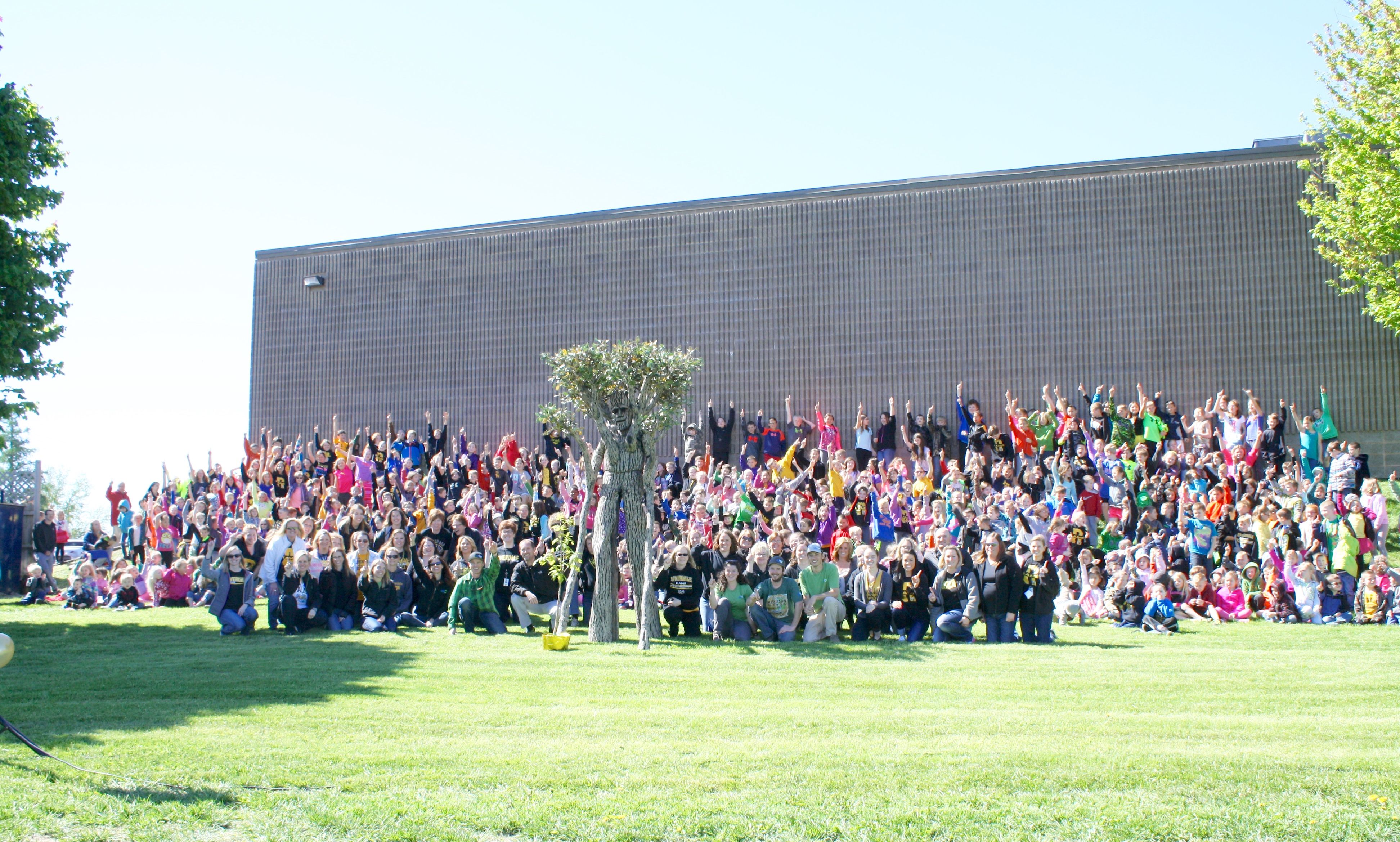
May 2016 – Over 600 students from Riverdale Elementary School (Port Byron, IL) excitedly gathered together with the LL&W crew, and “The Walking Tree of Life” for the presentation and planting of our one-millionth tree!
FAQ’s
-
How can I volunteer?
If you do not see any open upcoming events - simply send a quick email to trees@livinglandsandwaters.org and say “Hey! Put me on your MillionTrees Project Volunteer list!” to be notified about events and links to register. We also post our calls for volunteers on our Facebook page, so be sure to “Like” LL&W…and tell your friends, too!
-
How can I request trees?
Click here to snag your free trees on February 12, 2024!
-
Planting instructions
We care about all of our little trees and want them to grow big and strong….and hope you do too! Help ensure their survival by watching our "How To Plant a Tree" video!
-
Tree Sapling First Year of Care Instructions
Bur Oak (Quercus Macrocarpa)
- Mature Height: 60-80 feet tall, spread of 40-60 feet
- Growth Rate: slow/moderate, adding 12 to 24 inches in height per year
- Sun Preference: full sun exposure. requires at least 6 hours of direct sunlight to grow optimally
Early Care:
- Regular watering (around 3 times a week) helps establish a strong root system; its long taproot will help it become drought-resistant once mature
- Water in a 1-2 foot radius around the base of the tree, saturating the soil enough to reach the developing roots. If leaves become yellow, you are overwatering it
- Mulch around the base of the tree helps with water retention and weed suppression
- Relatively low maintenance and drought resistant once established (typically 2-3 years), does not require regular watering in the winter as it will be dormant
- No need to prune unless branches are damaged or dead. It is best done in in late fall through early spring to minimize stress on the tree and reduce the chance of fungus growth
Swamp White Oak (Quercus Bicolor)
- Mature Height: 60-80 feet tall, spread of 50-60 feet
- Growth Rate: moderate/fast, adding 12 to 24+ inches in height per year
- Sun Preference: full sun, needs 4-6 hours of sun, the more sun it receives the faster it will grow but also withstand partial sun
Early Care:
- Grows well in moist areas and near bodies of water
- The root system is shallow to medium depth and requires regular watering when it is young
- Does not require mulch in warmer months, and doing so may lead to root rot. Although adding some mulch in the winter may help protect the developing root system
- Allow fallen leaves should remain on the ground in the fall, as they will be a natural fertilizer as it grows
- May benefit from a winter wrap in its first year and does not need to be watered in winter as it will become dormant
- Prune the tree in the late winter, removing dead or damaged branches
Red Oak (Quercus Rubra)
- Mature Height: grows to 60-75 feet tall in open areas, can grow 90-150 feet in forests
- Growth Rate: fast-growing, adding around 2 feet every year
- Sun Preference: full sun, prefers 4-6 hours of sunlight but can tolerate partial sun and partial shade
Early Care:
- Water once or twice a week to help establish roots; water more if conditions are hot
- Water enough so moisture reaches a depth of 2 feet in the soil will be relatively drought tolerant once mature
- Root system should be kept moist, not soggy
- 2-3 inches of mulch around the root area of the tree could help with moisture retention; do not all the way up to the trunk of the tree
- When the tree is 3 years and younger, only prune dead and damaged branches in winter; use clean pruners to ensure you don’t spread disease
- May benefit from a winter wrap in its first year and does not need to be watered in winter as it will become dormant
Pecan (Carya Illinoinensis)
- Mature Height: grows to 70-100 feet tall, and spread is 40-75 feet
- Growth Rate: moderate/fast growing, adding 12-36 inches a year
- Sun Preference: full sun, needs 6-8 hours of sunlight per day
Early Care:
- Requires a lot of water to produce a good harvest. Start by watering 2-3 times a week, water more frequently if conditions are hotter. Aim to give it 10-15 gallons of water per week in its first 2-3 years of life
- Applying mulch around the base of the tree may help prevent water evaporation and weed competition
- Soil should be kept moist but not wet, native to the well-drained Mississippi floodplain
- Pruning branches that are growing very long or very close together can help with the shape and strength of the tree, do so in the early spring before buds start to grow
- Do not prune more than ⅓ of the branches
-
Why is this project important?
Over the last 150 years, there has been a decline in tree diversity along the shorelines of the Midwest’s mightiest rivers as hardwood trees (such as oaks, hickories, pecan, paw paw, etc.) have been depleted for fuel and building materials, and by flooding and disease. Everyone assumes that there is an abundance of wildlife on the river but many species have nearly disappeared because of the absence of food as the trees that currently exist on the river have little or no food value for wildlife.
The MillionTrees Project will only plant trees that produce nuts and fruit so that ducks, songbirds, squirrels, wild turkeys, etc. have a viable food source. These strong hardwoods also create a wonderful habitat for wildlife and nesting birds.
The roots of trees act as filters. Especially when planted along waterways, these roots can help reduce the amount of pollution and run-off entering our creeks, rivers and streams.
Trees grow long and strong roots in order to keep them in place. These same roots also help keep the ground in place and reduce erosion. Diversifying the current makeup of trees along our shorelines and in our communities increases the opportunities for beneficial wildlife and insects to live. It also helps protect against viruses, bores, etc. that could otherwise deplete an entire forest that’s made up of just one or two species.
Trees filter the air we breathe. By absorbing carbon, they reduce the impacts of climate change and the leaves also produce oxygen for us to breathe.
When planted along shorelines and islands, these trees produce shade over our waterways, keeping them cool for aquatic life and reducing the intensity of algae blooms and eutrophication of our waters. They also keep humans and wildlife safe and cool during hot and steamy summers.
Aside from all the health and wildlife benefits, trees are just plain beautiful and increase aesthetics everywhere they are planted.
Perhaps the most important part of this project is the community involvement. Thousands of volunteers annually help LL&W with packaging and planting trees throughout the Midwest.
To learn more or to get involved, please email trees@livinglandsandwaters.org!



